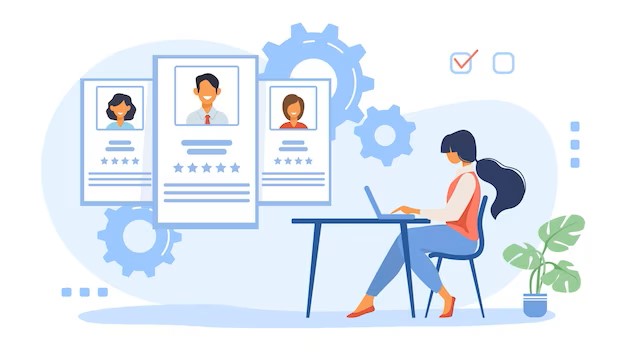HRMS Implementation Guide: A Step-by-Step Approach to Success
Embark on a journey to successful HRMS implementation with this comprehensive guide. From planning to execution, discover the best practices to ensure a smooth transition and maximize the benefits of your HRMS dashboards.
Embarking on the journey of HRMS implementation is a transformative step for any organization. This comprehensive guide navigates you through the intricacies of the process, from meticulous planning to seamless execution. Uncover the best practices that will not only ensure a smooth transition but also maximize the benefits of your HRMS dashboards, elevating your HR management to new heights.
1. Strategic Planning: Lay the Foundation for Success
Define Clear Objectives: Clearly outline the objectives you aim to achieve with HRMS implementation. Whether it's improving efficiency, enhancing data accuracy, or fostering employee engagement, having well-defined goals sets the stage for a successful implementation.
Assess Organizational Needs: Conduct a thorough analysis of your organization's specific HR requirements. Identify pain points in existing processes, gather feedback from key stakeholders, and align the HRMS implementation plan with the unique needs of your organization.
Create a Cross-Functional Implementation Team: Form a dedicated team with representatives from HR, IT, and key departments. This cross-functional approach ensures that diverse perspectives are considered during the planning and execution phases.
2. System Selection and Vendor Evaluation: Choose Wisely
Conduct a Needs Analysis: Match your organizational requirements with available HRMS solutions. Consider factors such as scalability, customization options, and compatibility with existing systems to find the best fit.
Thorough Vendor Evaluation: Evaluate potential vendors based on their track record, customer reviews, and the level of support they provide. A robust vendor evaluation process sets the foundation for a successful long-term partnership.
Consider Scalability: Choose an HRMS solution that can scale with your organization's growth. Scalability ensures that the system can adapt to changing workforce dynamics and evolving HR needs.
3. Customization and Configuration: Tailor to Fit Your Needs
Customize for Relevance: Tailor the HRMS dashboards to align with the unique processes and policies of your organization. Customization ensures that the system is not just a tool but a strategic asset that complements your specific HR workflows.
Configuration for Optimal Functionality: Work closely with your implementation team to configure the HRMS system for optimal functionality. Fine-tune settings, workflows, and access levels to align with your organizational structure and objectives.
4. Robust Data Migration: Ensure Accuracy and Integrity
Data Cleanup and Validation: Prioritize data accuracy by cleaning up and validating existing HR data before migration. Inaccurate or outdated data can hinder the effectiveness of your HRMS dashboards.
Plan Incremental Data Migration: Rather than migrating all data at once, consider an incremental approach. This minimizes the risk of errors and allows for thorough validation at each stage of the migration process.
5. Training and Change Management: Empower Your Team
Comprehensive Training Programs: Provide extensive training for HR professionals, managers, and employees to ensure they are well-versed in using the HRMS dashboards. Training fosters confidence and promotes a smooth transition.
Implement Change Management Strategies: Acknowledge that HRMS implementation is a significant change for the organization. Implement change management strategies to address concerns, communicate effectively, and foster a positive attitude towards the new system.
6. Integration with Existing Systems: Foster Seamless Connectivity
Integration Planning: If your organization uses other business systems, plan for seamless integration with the HRMS. Integration ensures that data flows smoothly between different systems, avoiding silos and promoting cross-functional collaboration.
Testing and Quality Assurance: Conduct thorough testing to ensure that integrations work seamlessly. Quality assurance processes help identify and address any issues before full implementation, minimizing disruptions.
7. Continuous Evaluation and Optimization: Iterate for Excellence
Continuous Feedback Loops: Establish mechanisms for continuous feedback from users. Regularly collect input from HR professionals, managers, and employees to identify areas for improvement and optimization.
Iterative Updates and Enhancements: Use feedback and performance metrics to inform iterative updates and enhancements. The HRMS dashboards should evolve over time to meet changing organizational needs and emerging industry trends.
8. Security and Compliance: Safeguard Sensitive Information
Security Protocols: Implement robust security protocols to safeguard sensitive HR data. Encryption, access controls, and regular security audits are essential components of a secure HRMS implementation.
Adherence to Compliance Standards: Ensure that your HRMS implementation adheres to relevant data protection and privacy regulations. Compliance with standards such as GDPR or local data protection laws is crucial for legal and ethical considerations.
9. User Support and Helpdesk: Foster Accessibility
Establish a Helpdesk: Create a dedicated helpdesk or support system to address user queries and issues. Prompt and efficient support ensures that users can navigate the HRMS dashboards without hindrance.
User Manuals and Resources: Provide comprehensive user manuals and resources for HRMS dashboards. Having readily available documentation helps users find answers to common questions and encourages self-service.
10. Monitor Analytics and Key Performance Indicators (KPIs): Measure Success
Define Key Performance Indicators: Establish KPIs to measure the success of your HRMS implementation. Whether it's increased efficiency, reduced turnaround times, or improved employee satisfaction, KPIs provide tangible metrics for success.
Regular Analytics Review: Regularly review analytics and performance metrics provided by the HRMS dashboards. Analyze trends, identify areas for improvement, and use data-driven insights to refine HR processes continuously.
In conclusion, successful HRMS implementation is a journey that requires meticulous planning, strategic decision-making, and a commitment to ongoing improvement. By following these best practices, organizations can navigate the complexities of HRMS implementation and optimize the benefits of their HRMS dashboards for sustained excellence in human resource management.






0 Comments